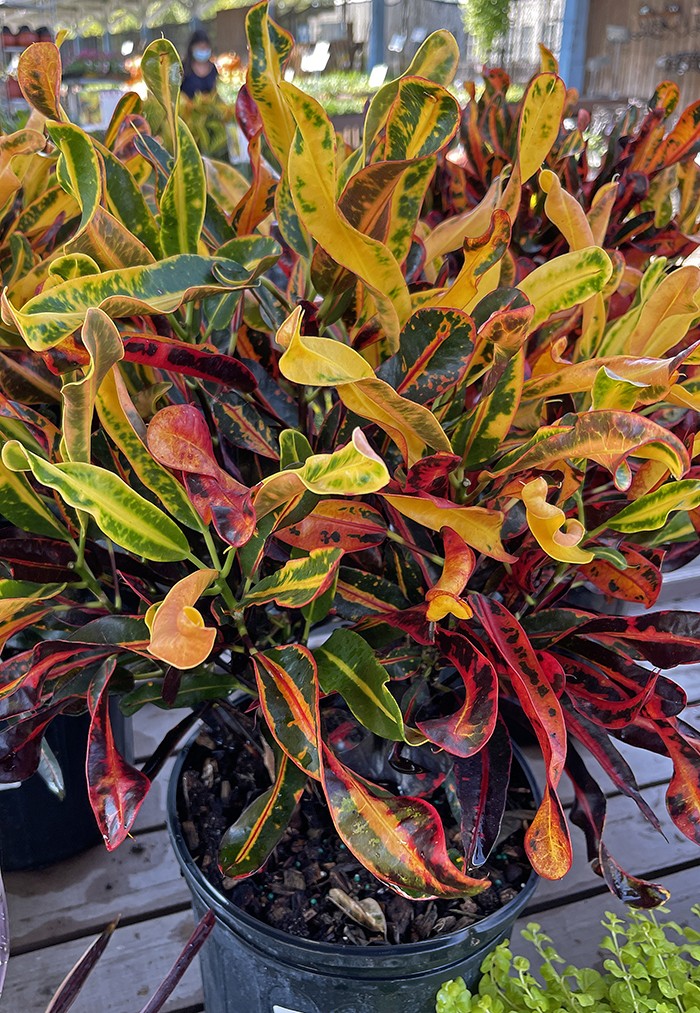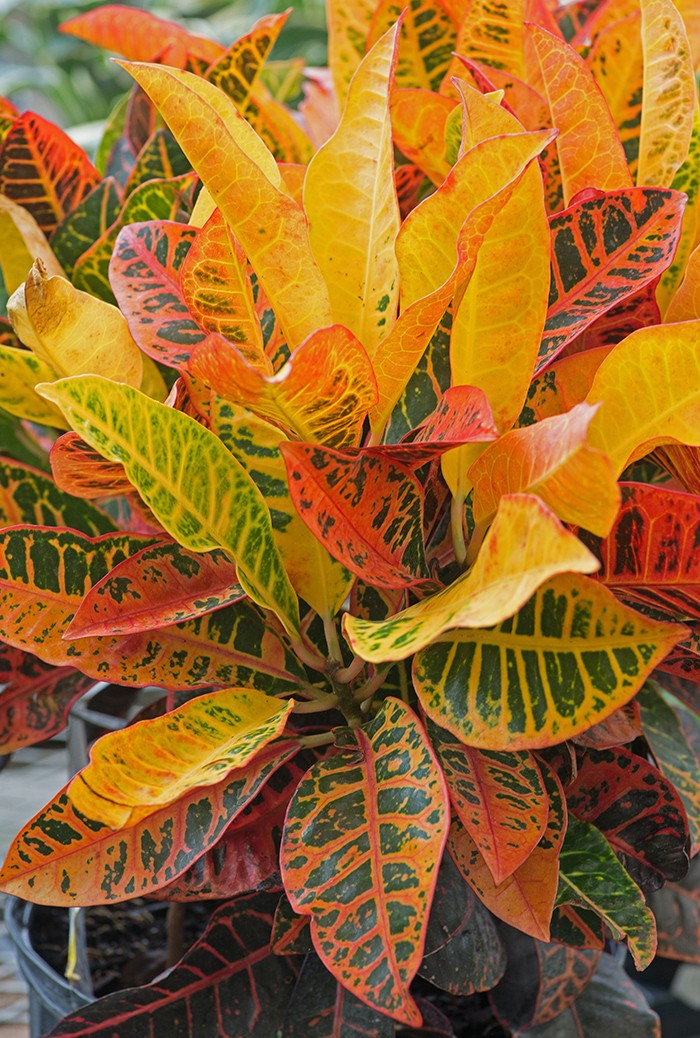After all the Christmas baubles and bangles have been put away, the ol’ homestead often seems void of cheerful color. The garden is normally a great place to find visual relief, but with winter strengthening, opportunities for such eye candy are becoming fewer. Houseplants can provide some optical interest, but many come in a singular color: green.
Not so with croton (Codiaeum variegatum).
This gaudy dandy of a plant looks like an escapee from a Mardi Gras float. Reds, pinks, yellows, greens, purples, oranges, coppers — these are the colors of croton. And such a cacophony of hues is streaked, splattered, splotched, blotched or dotted on vibrant vegetation that ranges from broad, four- to six-inch-wide, one-foot-long leaves to skinny strap-like shoots and fancy fronds that mimic oak foliage.
Readily found at local garden centers, croton is an easy plant to grow indoors. Being a sun-lover, this pretty should be placed in a bright, south-facing window, but don’t let the leaves touch the glass — they can be bit by the winter cold.
Dry conditions indoors can cause a croton to drop leaves, so keep it away from air vents, and water when the top of the soil in the pot feels dry to the touch. Also, it is not a bad idea to occasionally mist their leaves.
Crotons are usually found as one- to two-foot-tall specimens in garden shops, but don’t expect them to stay that way. Some of these fancy plants can reach six feet tall and about as wide, so if you want to keep them from becoming biggies, prune the end of each stem back a few inches to a joining leaf or axil in the spring. Frugal gardeners take note: The cuttings can be easily rooted in water.
Speaking of spring, this tropical plant from Malaysia and India does love our southern heat and humidity, so after the temps start getting toasty — usually around the middle of May — give your croton a vacation outside. And don’t worry about sun damage. In fact, the more the leaves are exposed to light, the brighter they become. Just be sure to water regularly.
Crotons can be planted in sunny, well-draining sites outdoors, but if you commit to digging them in, don’t count on these pretties surviving the winter. Easily wilted by nighttime temperatures in the 40s, crotons that remain potted should be brought inside well before the chill of autumn settles in for the season.

Croton
Croton is a treat for the eyes only, meaning kids and pets should be kept away from this dazzling plant, which could tempt the curious to try a taste. Chewing on the leaves will result in a tummy ache of biblical proportions. If possible, place your croton in a visible yet unreachable spot indoors.
Also, broken or snipped branches ooze a milky sap that can stain the skin and, for those with sensitive skin, cause an irritating rash. To prevent such an itchy encounter when pruning your croton, be careful not to touch the cut tips, or simply slap on a pair of light gloves.
To Do in the Garden
January
- Crotons with their sizzling colors are hard to miss, and likewise your garden tools will be easier to find in the lush spring garden if you make it a winter chore to paint their handles bright orange, yellow or red.
- Overwintering garden friends on the wing will appreciate it if you continue to keep the bird feeder well stocked through the chilly, barren times. Also, wash and refill the birdbath at least once a month as well as remove any ice that might form in the bowl.
February
- Is creating a stone walk one of your late winter projects? If you are using sand instead of mortar to set the stones, include one extra step. Before laying the stones and sand down, add a sheet of plastic weed block to the pathway to help cut down on unwanted weeds popping up between the stones. Ditto for new brick paths.
- Summer-blooming woody ornamentals such as abelia, butterfly bush, crepe myrtle, summersweet, beautyberry, rose of Sharon and vitex flower on new wood, so this month is a good time to prune them in order to stimulate the production of additional springtime branches.
- Restaurant Profile: La Grassa Pastificio
- Beat Home-Office Back Pain with These 11 Stretches
- At the Wheel
- Thinking About Retirement?
- Nonprofit Spotlight: Made4Me
- Small Business Spotlight: The Little Gym of Cary
- Things to Do: January/February 2022
- Garden Adventurer: Getting Gaudy: The Colorful Crotons
- Sweet on Pickleball
- From the Editor: A Fond Farewell
- Tea Time
- Liquid Assets: Better Believe from Barrel Culture Brewing and Blending







